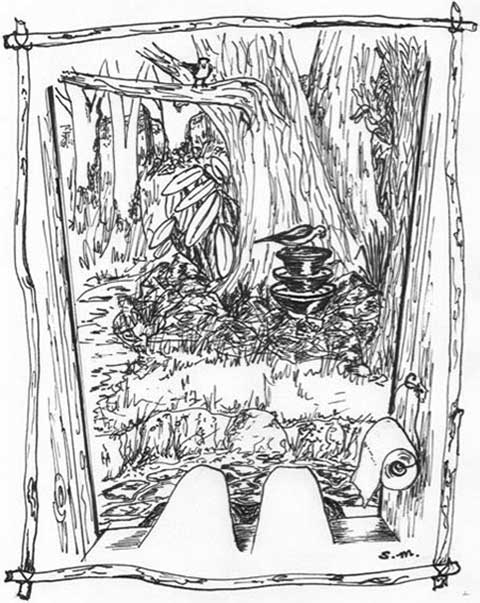
The sun on your knees, a view of birds and bush… who’d want an indoor loo? This sketch and extract is from The Woman on the Mountain, Chapter 14, ‘The Simple Life’.
‘Contrary to popular mythology, the simple life is not found in the country but in the city, where you simply pay your bills and press a button for everything you need, and you don’t have to know how any of it works or be able to fix it yourself.
…
‘My next self-sufficient system is sanitation. I have what is called a ‘long drop’, a big hole in the ground with my old jail’s lidded seat over it and a shelter shed over that. It was originally a metre-cubed hole, dug into bedrock with pick and crowbar in 1978. I’d assumed it would last a few years, but it’s still going. Beside the seat is a lidded enamel canister which officially says SUGAR, but as nobody takes tea there I think it’s safe from confusion with my Texta-scrawled LIME. A sprinkle of the latter now and then is enough to keep the material breaking down, while an evaporation pipe dries it out and reduces the volume.I always thought I’d build a dry composting toilet one day, but the only real difference from my current one would be that I’d get to use the resulting compost.
A few overly civilised visitors have had difficulty using my sanitation arrangements. I’ve never asked whether this was from the dark pit yawning beneath them or the idea of communal storage, but the ensuing psychosomatic constipation was real. They couldn’t wait — or rather, they could — to get back to a proper flushing loo. I feel sorry for them, so unable to accept that they’re part of the animal world, with the same basic processes necessary for survival. They were possibly also uncomfortable without a door to shut, but the toilet faces away from the house, and they wouldn’t see the birds and trees otherwise.
Having grown up with a pan toilet — a far-too-short drop — I consider mine quite manageably distant and salubrious. That toilet, complete with harsh and unabsorbent newspaper squares impaled on a large nail, was dark and spider-scary because it wasn’t done to leave the door open; and smelly, often maggoty, because it was never emptied soon enough. When Dad worked away from home for a month once, Mum and I had to do it, and I understood why he’d kept putting it off. But that first row of orange trees, in the burial range, had the glossiest, greenest leaves, and the biggest, juiciest fruit, of all the trees in the orchard.
The disadvantage of my toilet is that it’s a fair hike up the hill when you’re in a hurry or it’s raining. If the pit ever does fill up, I’ll build the new toilet on the flat, still outdoors, perhaps reached by a covered walkway. And I’ll plant an orange tree on the old site.
I have copies of The Woman on the Mountain which you can buy at a special price here.

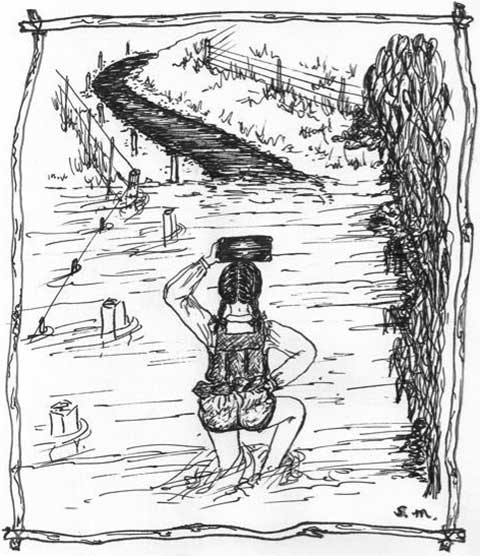
 I was based in Hobart, a stunningly located and perfectly-sized city, in my opinion, and spoke once more at the terrific Hobart Bookshop in Salamanca Place, where Chris Pearce continues the best traditions of small bookshops. Long may such treasures for booklovers remain.
I was based in Hobart, a stunningly located and perfectly-sized city, in my opinion, and spoke once more at the terrific Hobart Bookshop in Salamanca Place, where Chris Pearce continues the best traditions of small bookshops. Long may such treasures for booklovers remain.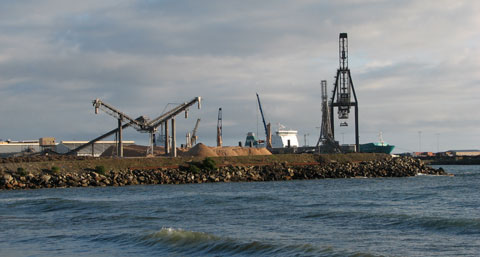
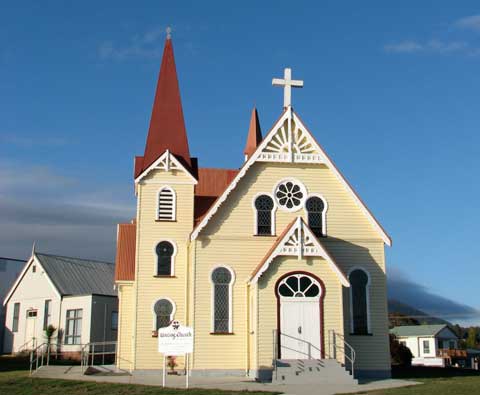
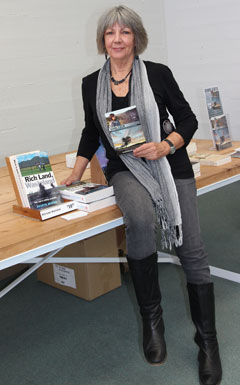 Launceston was an unexpected treat, full of gracious old buildings and good restaurants. I met up with Queensland friend Liz Mahood, who was showing in the ‘Documentary://Bimblebox’ exhibition at the
Launceston was an unexpected treat, full of gracious old buildings and good restaurants. I met up with Queensland friend Liz Mahood, who was showing in the ‘Documentary://Bimblebox’ exhibition at the 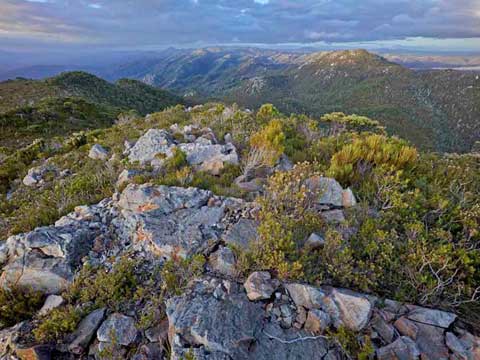
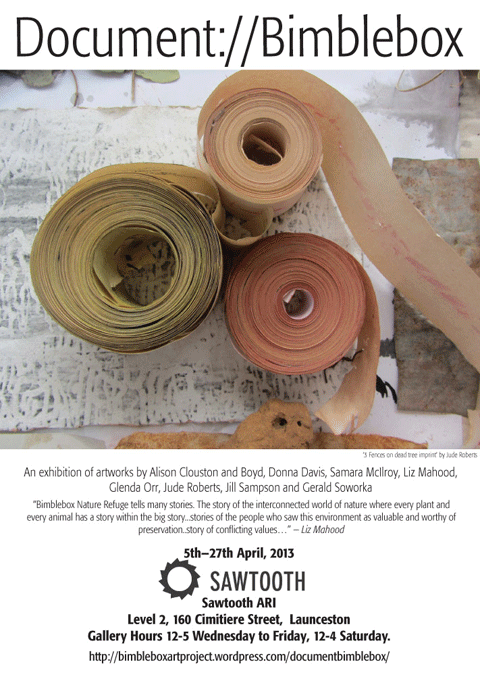
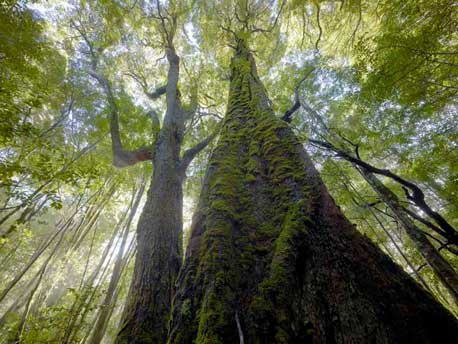 Mount Lindsay in the Tarkine — threatened by mining. Photo: Rob Blakers.
Mount Lindsay in the Tarkine — threatened by mining. Photo: Rob Blakers.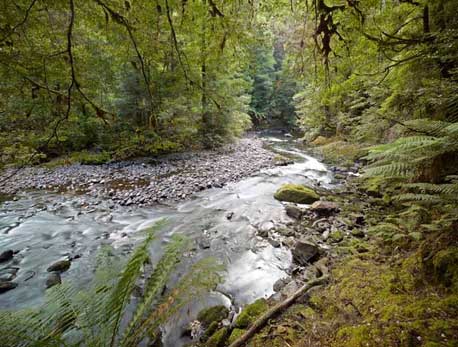 The Huskisson River in a current mining lease. Photo: Rob Blakers.
The Huskisson River in a current mining lease. Photo: Rob Blakers.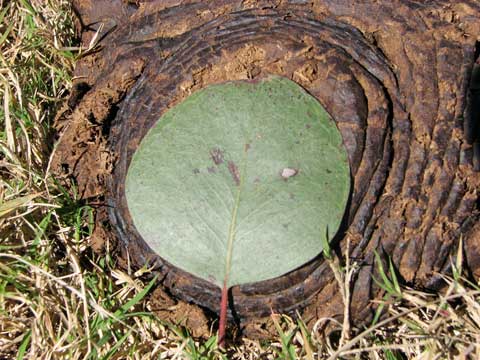
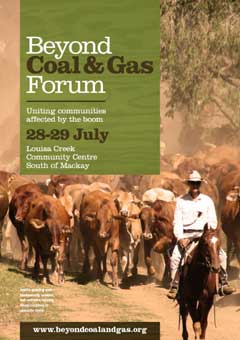 In a few weeks I’m heading back up to Queensland, to revisit some of the places in my Rich Land, Wasteland book, as in the chapter ‘Dark times in the sunshine state’ and others.
In a few weeks I’m heading back up to Queensland, to revisit some of the places in my Rich Land, Wasteland book, as in the chapter ‘Dark times in the sunshine state’ and others.
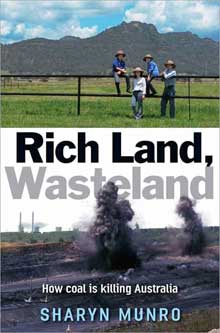 Things are snowballing with the Rich Land, Wasteland coal book. One amazing lady has just bought 100 books to send to politicians whom she feels simply must read it to know what they are doing to us.
Things are snowballing with the Rich Land, Wasteland coal book. One amazing lady has just bought 100 books to send to politicians whom she feels simply must read it to know what they are doing to us.